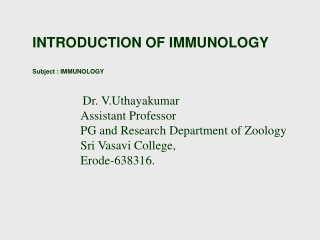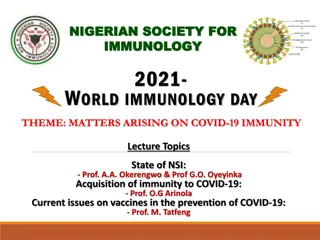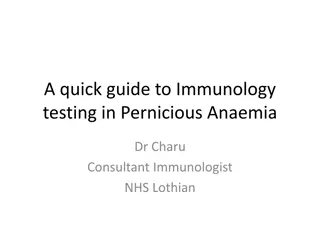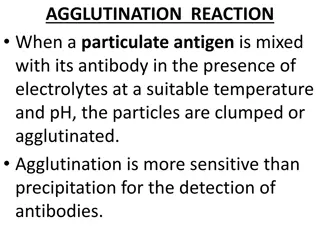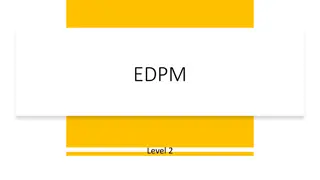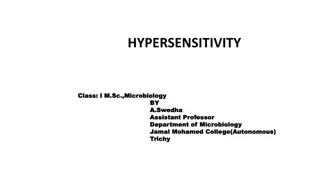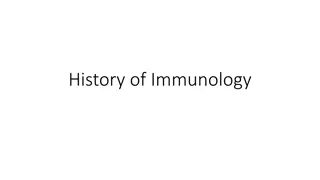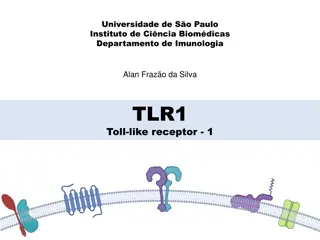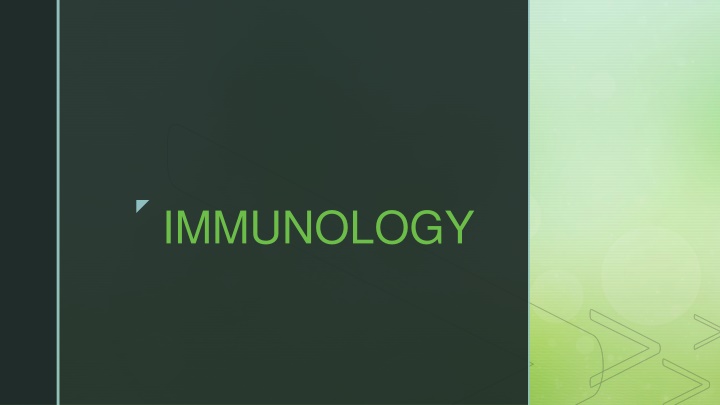
Immunology and Immunity: Key Concepts and Defense Mechanisms
Explore the fascinating world of immunology and immunity, including the definitions, history, and functions of the immune system. Learn about the different defense mechanisms, from non-specific barriers to specific immune responses. Dive into the details of the first line of defense, comprising physical and chemical barriers that protect the body from harmful microorganisms. Discover the intricate ways in which the immune system safeguards our health and well-being.
Download Presentation

Please find below an Image/Link to download the presentation.
The content on the website is provided AS IS for your information and personal use only. It may not be sold, licensed, or shared on other websites without obtaining consent from the author. If you encounter any issues during the download, it is possible that the publisher has removed the file from their server.
You are allowed to download the files provided on this website for personal or commercial use, subject to the condition that they are used lawfully. All files are the property of their respective owners.
The content on the website is provided AS IS for your information and personal use only. It may not be sold, licensed, or shared on other websites without obtaining consent from the author.
E N D
Presentation Transcript
IMMUNITY It is defined as the general ability of the body to recognize, neutralize, destroy and eliminate disease producing agents. The term immunity was coined by Burnet.
IMMUNOLOGY It is the science which deals with the study of immune system, immune responses to Foreign substances and their role in resisting infection . Father of immunology is Emil Von Behring who discovered antibodies.
Defence Mechanism Non Specific Defence Specific Defence External Defence Internal Defence Immune system
NON - SPECIFIC DEFENCE LINE OF DEFENCE FIRST LINE OF DEFENCE SECOND LINE OF DEFENCE
FIRST LINE OF DEFENCE It is an external defense and prevents entry of microorganisms in blood. It includes two barriers: PHYSICALBARRIERS CHEMICAL BARRIERS
PHYSICAL BARRIER These are also called structural/anatomical barrier. These includes skin and mucous membrane. SKIN Intact skin is the largest defensive organ. Hard keratin of skin is waterproof. MUCOUS MEMBRANE It lines respiratory tract, G .I. tract, urogenital tract and exposed part of eyeball(conjunctiva). It consists of epithelium along with underlying connective tissue. .
CHEMICAL BARRIERS These are also called functional/physiological barriers. These include secretions from skin, mucous membrane and glands. Skin has Sweat or sudoriferous glands. Oil or sebaceous glands. Sweat glands produce sweat which keeps skin pH acidic. Acidic pH minimizes growth of harmful bacteria. Oil glands produce oil which keeps skin soft.
CHEMICAL BARRIERS Tears (lacrimal fluid), saliva and mucous secretions contain enzyme called isozyme. Lysozyme breaks down cell wall of gram+ bacteria. Oxyntic cells of gastric glands of stomach secrete HCl. It is a potent killer of typhoid bacteria (Salmonella typhi). People who regularly take antacids are more susceptible to typhoid. Throughout reproductive life of female, vagina contains bacteria Lactobacillus acidophilus. This bacteria converts glycogen into lactic acid which keeps vaginal pH acidic. Acidic pH minimizes chances of vaginal infection.
SECOND LINE OF DEFENCE It is an internal defense and prevents spread of microorganisms in the body. It includes: White Blood Cells. Macrophages. Interferons. Inflammatory reaction. N.K. Cells. Complement proteins.
WHITE BLOOD CELL Leucocytes are also known as white blood cells (WBC) as they are colourless due to lack of hemoglobin. They are nucleated and are relatively lesser in number which averages 6000-8000 mm 3 of blood . These are generally short lived. Number of leucocytes increases in response to infection. Increase in WBC count is called leukocytosis. These squeeze out of capillaries to fight infection (diapedesis).





